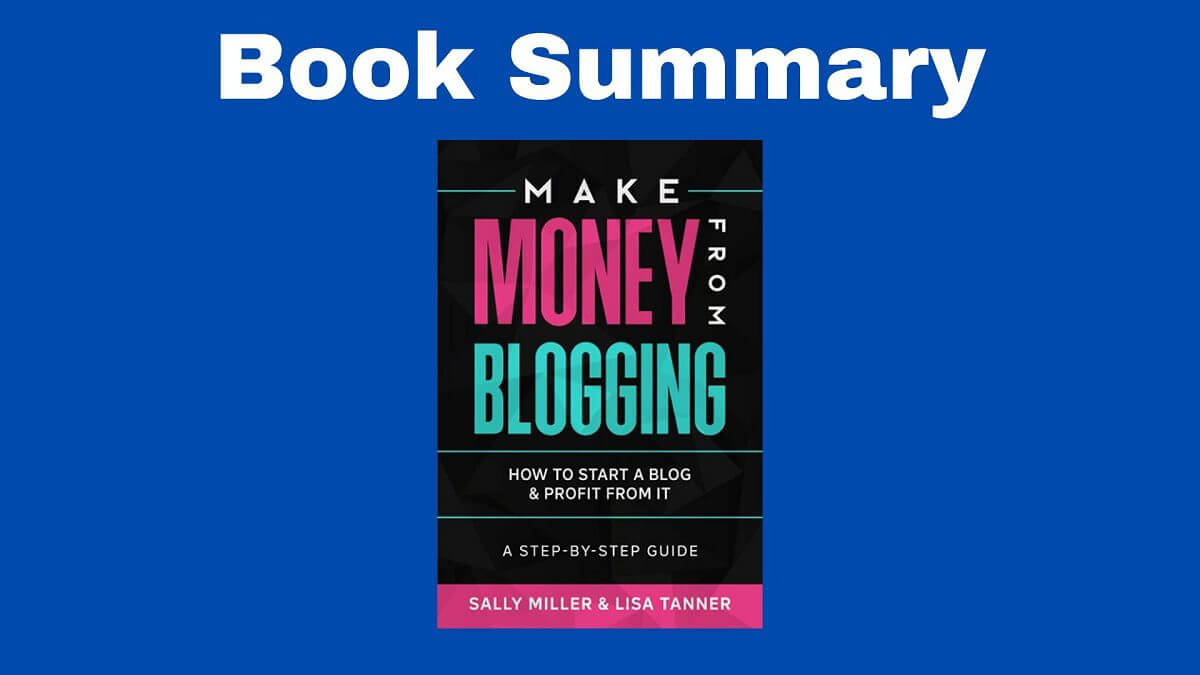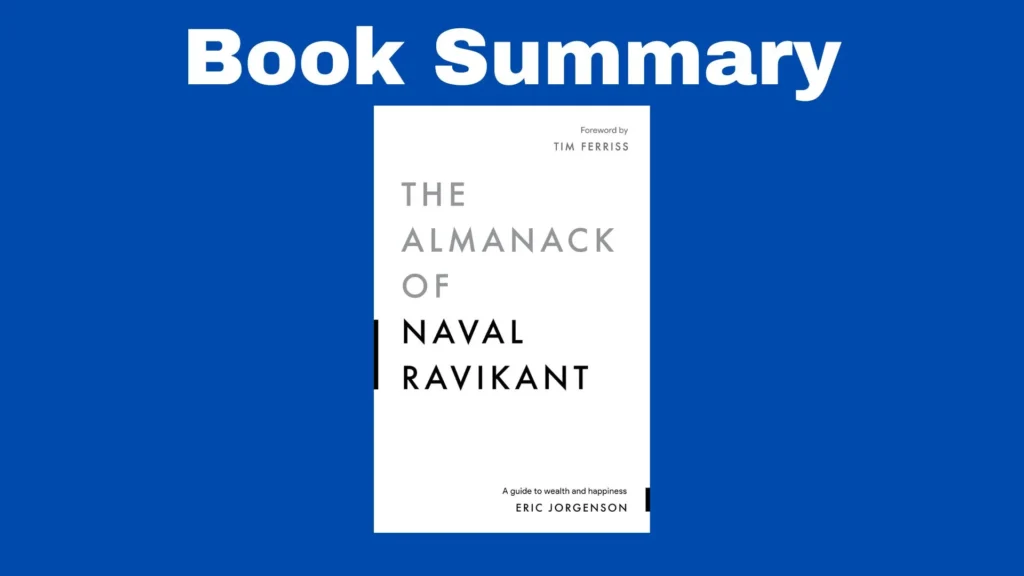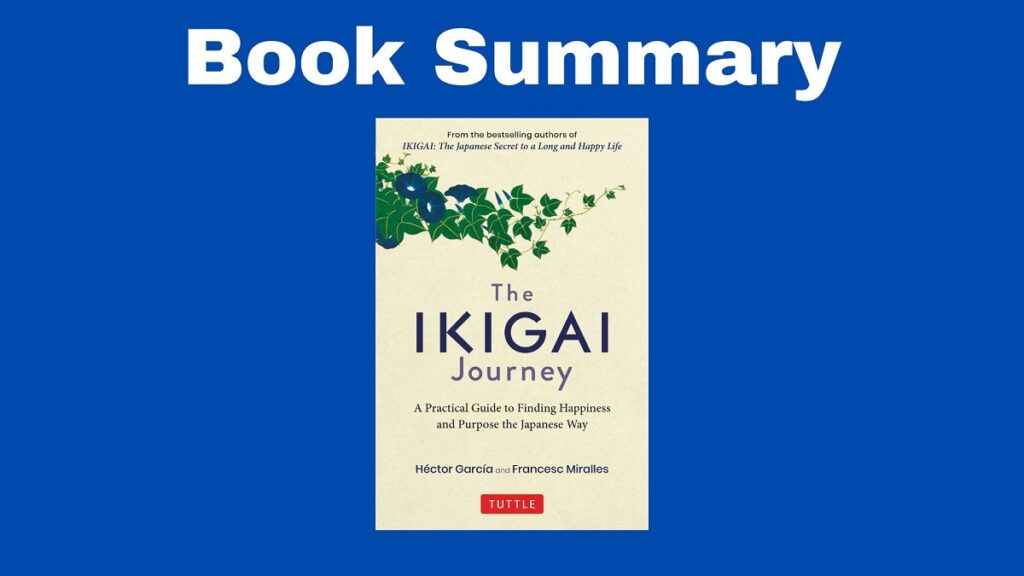The Book in Three Sentences
In this book summary of Make Money from Blogging, you’ll learn how to start a blog and make your first $1000. Among other things, this book focuses on picking your niche, setting up a blog, creating content, and choosing monetization strategies. Reading this book will help you generate income from your blog as early as possible.
Make Money from Blogging Summary
Introduction
You can’t sustain a blog if you don’t love writing and if you aren’t passionate about your niche. Those are the only things you need to have a successful blog. Making a living from your blog is possible, but that shouldn’t be your primary goal for doing it. The process can be overwhelming, but you’ll be fine as long as you have a plan.
Chapter One: Creator a Reader Persona
The foundations of your blog are your ideal readers and your niche.
The ten most popular niches are:
- Blogging
- Personal finance
- Health
- Survival
- Higher education
- Technology
- Personal development
- Lifestyle
- Food
- Fashion
To find your niche, think about your favorite topics (these are your interests) and what you know about (these are your skills). The three most common fears associated with picking your niche are:
- I’m not an expert: luckily, you don’t have to be an expert. As long as you have some knowledge or skills on a given topic, you can add value to a lot of people. Your audience doesn’t have people who know more than you, but people who know less.
- I’m afraid I might choose the wrong niche: it’s possible to pick the wrong niche. You’ll notice this when your posts don’t get comments, when you don’t enjoy talking about it, when you can’t come up with ideas for posts, or when there are no bloggers making money from the same niche as you. The solution is to pivot and focus on the topic you like and people enjoy.
- I have multiple interests: it’s natural to have multiple passions. Fortunately, the more you put yourself out there, the more your readers will want to know you. Eventually, you’ll be able to share more about your life. Experimenting is a big part of what makes blogging so powerful.
Once you know what to write about, you have to find your ideal reader. There are five aspects to consider when thinking about your ideal reader:
- Demographics: this includes gender, age, location, education, income, and profession of your readers.
- Personality: this includes their interests, hobbies, personality traits, hopes, and problems.
- Social habits: these are the platforms they use regularly. Some of them include Pinterest, Facebook, Twitter, YouTube, Instagram, and LinkedIn.
- Media Habits: this is how your readers access your content. It includes their browser of choice, devices, and type of media (written, audio, or video).
- Money habits: these are all the habits related to money. Problems they pay to solve, expenses, and stores they frequent.
Coming up with your ideal reader takes time, so be patient. Gather a lot of information and write a description of your ideal reader for future reference. While you may make some mistakes when describing your audience, at least you have a rough idea of who you’re writing for.
Chapter Two: Set Up Your Blog
Starting a blog that can generate income costs money, but it isn’t expensive (it costs less than $100). There are free platforms out there, but they aren’t the best option if you want to generate money. The problem with free platforms is that you don’t have full control of them which means that there are some strict rules you have to follow, especially around advertising. Violating those tiles can lead to serious consequences, such as losing your blog.
Getting a self-hosted blog gives you full control, as well as limitless customization options and credibility, thanks to the possibility of getting a domain of your choosing.
This is what the process looks like:
- Get a domain: this is your unique address on the internet
- Get hosting: web hosts store all the files related to your site on a server. There are numerous options to choose from, but make a decision based on customer support, reliability, reputation, security, and pricing.
- Start with WordPress: WordPress is a content management system that lets you customize your site, as well as post content on it.
- Select your theme: your theme features the overall style of your website. In other words, it’s how the site looks. As long as the theme you choose is mobile-responsive (this means it changes to accommodate different screen sizes), compatible with most browsers, and has documentation and support, you’re good to go.
- Customize your blog through plugins and widgets: plugins add additional functionality to your site. Some of the ones the author recommends are Yoast SEO, Akismet, Comment Luv, Pinterest Pin It Button, Google Analytics for WordPress, Molongui Authorship, JetPack, BrokenLinkChecker, and WP Super Cache. Widgets are blocks that do small tasks. The most common ones add social images, social media links, popular posts, and a search bar.
- Create content: create three pages at first. A home page, an about page, and a contact page. Once you do that, you can start working on individual posts.
Chapter Three: Plan Your Content
To generate money through your blog, you need a plan. The best way to do so is through a content calendar. While there’s no perfect schedule, you have to be consistent because that’s the factor that keeps people coming back to your blog. Ideally, you’ll post content evenly in different categories.
Search Engine Optimization or SEO helps you get traffic to your site. Keywords tell Google what your content is about. Beginner bloggers should focus on long-tail keywords to attract readers looking for specific information. There are different tools you can use to find the right keywords, such as Pinterest or KW Finder.
Once you find your keywords, determine what kind of content, you want to create. Options include listicles, tutorials, reviews, and case studies. Then, you have to come up with eye-catching headlines that invite people to read your posts. Good headlines are intriguing, detailed, and shareable.
Finally, you need a content calendar, an essential tool to organize your posts. First, you need to decide when you’ll be posting articles. Then, you need to look at the headlines you came up with. Finally, you assign a headline to a date when you intend to publish.
Chapter Four: Get Ready for Readers
Before you welcome readers to your site, you have to make some preparations:
- Your “about me” page tells people something about you. More importantly, this is a chance to tell your readers the kind of problems your site will solve for them. The “about me” page should have your name and picture, some facts about you, a link to your most popular posts, and a call to action.
- A contact page is a way for people to get in touch.
- Legal requirements refer to all the regulations you have to follow. The most important ones are SSL, Privacy policy, disclosure, and copyrights.
- List building is important because this is a platform you own and you can use it to communicate with your readers directly. To enable one, you need an email service provider and a form. Make sure you provide freebies to entice readers to subscribe. These include courses, ebooks, worksheets, product samples, or video content.
- Make content and images easy to share
- Set up social accounts on some of the most popular platforms.
Chapter Five: Create Content
Blog posts have a unique format. This is what you should have in mind when writing a blog post:
- They should be easy to read by including bullet points, numbered lists, and subheadings.
- They include images
- Their purpose is clear
- They have a conversational tone
- They have short paragraphs
- Their links are helpful
Before posting the content, you should write a draft on WordPress, Word, or Google Docs. The writing process has four steps. First, you outline the post. Second, you do some research. Third, you create a draft and include a call to action at the end of your post (comment, share, or subscribe). Finally, you edit the post by getting rid of unnecessary words, rearranging ideas so that they make sense, using simpler terms, and correcting mistakes. Now, you’re ready to post.
Chapter Six: Market Your Content
For people to find your content, you need to market it. Sharing your posts on social media isn’t enough. There are way too many options when it comes to marketing your content, so try different platforms and find the ones that work best for you.
- Pinterest: this isn’t just a social network but a search engine. Pinterest is all about images.
- Facebook: create a Facebook business page to connect with your readers. Apart from sharing your content, you can also share behind-the-scenes, quotes, questions and answers, polls, tips, or memes.
- Twitter: Twitter is all about brevity and hashtags. Setting up an account is easy and as soon as you do so, follow people in your niche. For Tweets, share quotes, links, life updates, or fun facts.
- Instagram: setting up a business account gives you access to analytics. Use your ideal reader in mind when sharing content.
Whatever you do, don’t start using all platforms at once. Start with one and add another one when you’re comfortable.
To boost your traffic, you can do guest posts on someone else’s blog. Start with small sites first and work your way up to bigger sites.
Chapter Seven: Create Your Monetization Strategy
To make money from your blog, you need a plan. As long as you’re targeting your ideal reader from the get-go, you can make money early on. The six methods to monetize your blog are:
- Affiliate marketing: affiliate marketing refers to promoting someone else’s product or service. Once a visitor clicks a link and makes a purchase, you get a commission. To promote the product, you can write a review, compare two products, promote the product via social media, or share it in the comments. The company should give you an affiliate link you can use for this purpose and whenever you share that link, you should make it clear that you’re receiving a commission from purchases.
- Product creation: consider creating a product of your own if you think it’ll solve a problem for your readers. Five of the most common products include ebooks, workbooks, courses, videos, or podcasts.
- Offering services: you can also offer services such as freelance writing, virtual assistance, graphic design, coaching, photography, web design, editing, social media management, bookkeeping, or blog management.
- Advertising income: advertisements also generate money. The most popular Pay Per Click companies are media.net, Google AdSense, Click Booth, Blog Ads, and InfoLinks. Once you have enough traffic (around 20,000 visits per month), you can contact companies directly to sell advertising space. You need a lot of traffic to make money through ads.
- Sponsored posts: sponsored posts are special partnerships you do with brands. As long as the posts are meaningful to your readers, you’re honest, you can disclose the sponsorship, and offer value to your readers, you can have sponsored posts.
- Hosting events: hosting events take the form of webinars or in-person meetups. When you do one of these, use reliable tech and always have a backup plan. Have an outline with things you’ll be discussing, work with other people if you have to, and communicate well.
Having multiple sources of income on your blog is great, but you should start small. This involves trying a strategy and then adding another one. Your site won’t be a success right away. Monetization takes time, patience, and experience.
Chapter Eight: Affiliate Marketing
Earning money from affiliate marketing requires you to build trust with your audience. This is often most bloggers’ first monetization choice because it’s low-cost and low-risk. Once you sign up through an affiliate program, read the agreement. You’ll soon have links, banners, images, coupon codes, and promotions. To start making money, you need to provide value first. You do this by matching your niche, using relevant links, being honest, and by knowing your readers. On top of promoting links through your site, you can also use social media platforms or your email list.
Chapter Nine Create Your Own Products
Your blog can be the home of your own products. This is a great option for those who have a following already. The two types of products you can sell are digital (ebooks, guides, photographs, courses) and physical.
Do research before creating a product. Which problems do you want to address? What are the most common complaints in your niche? How can you meet them? Once you know what you want to make, start working on it. Once it’s ready, test it with the help of friends or a professional editor. Now you have to design a beautiful cover for the product and determine how much you’re going to charge for it.
To deliver the product you can use:
- Third-party services such as Easy Digital Downloads, Podia, SendOwl, and Gumroad.
- Store Plugins such as WooCommerce, eCommerce Shopping Cart, or Cart66.
- An email course
- A course hosted on your site via plugins such as Zippy Courses, LearnPress, or LearnDash
- A course hosted via a third-party, such as Teachable, Podia, Udemy, or Ruzuku
Chapter Ten: Offering Services
By offering services, you trade skills for money. There are endless possibilities when it comes to services, so pick one. Become a specialist rather than a generalist because you’ll make more money. Charge by-product rather than by the hour because the better you are, the quicker you’ll become. Once you’ve chosen a service, create a “hire me” page and include some samples and testimonials.
Chapter Eleven: Find Time to Blog
One of the most challenging parts of blogging is finding the time to do so. Coming up with a daily routine that works for you is worth it. Here are some strategies you can implement:
- Minimize decisions: avoid stopping work to make decisions. Examples include planning the meals for you and your family, clearing your schedule, giving your kids a day where they can choose a tv show to watch while you work, and deciding when you’ll work.
- Cut tasks such as watching TV. Also, buy meals instead of making them.
- Work in small bursts: this involves scheduling social media posts, replying to comments, brainstorming ideas, finding photos, outlining posts, testing headlines, and so on.
- Look for help from family members, a significant other, or your children.
- Have a flexible schedule which means you can work early in the morning or in the evenings.
Something that also works well is having a weekly session where you determine what’s important. This lets you prioritize the tasks you want to get done.
Chapter Twelve: Now What?
Not it’s the time to take action. Even if you make mistakes, you can learn from them. Blogging is a skill that becomes easier over time, so start working on it and keep doing it.




